The European landscape changed forever when in the late summer months of 2015 thousands upon thousands of people started to reach the EU in search of a better and — above all — safer life. We take a comprehensive look back at the major events that have since had a major impact on the European migration debate over the past decade, assessing how the past will continue to inform the future. This is the fourth part in a series of five articles, focusing on 2021 and 2022.
"Wir schaffen das."
Translation: "We can cope."
The consequences of these three words might in future be regarded as having had the biggest lasting impact on Europe since the end of World War II — perhaps only second to the fall of the Berlin Wall and the subsequent end of the Cold War.
Former German Chancellor Angela Merkel uttered this short sentence during a press conference on August 31, 2015, telling the world that Germany and Europe at large would confidently manage the growing number of refugees and migrants reaching the continent from all over the world, in particular from war-torn Syria.
Many things have changed in the ten years since. New refugee and migration movements happened, and the continent has witnessed seismic shifts in policies and politics, as well as in attitudes toward migration.
InfoMigrants looks at some of at the biggest events of the past decade, exploring whether — and how — Europe did manage to cope in the end.
This article looks specifically at the years 2021 and 2022 as part of series.
2021: New migration dynamics in the wake of pandemic lockdowns
Belarus: A new migration route emerges
Once the majority of the COVID crisis was over and vaccines were in sight, migration movements towards the EU started picking up again. In the summer of 2021, a new route emerged on the bloc's eastern flank: the Belarus route. Migrants started to present at the border of Belarus and the EU member states of Poland, Lithuania and Latvia. It quickly emerged that in most instances, they had been flown to the capital of Belarus, Minsk, traveling to the border area with the EU often on the same day.
Upon further investigation, it was revealed that the government of Belarus was actively involved in facilitating their migration: After his contested re-election as president in 2020, Belarusian President Alexander Lukashenko faced sanctions by the European Union over the authorities’ crackdown on protesters after the vote. In what appears to be a retaliatory move to destabilize the EU, Lukashenko and his government started to facilitate the migration of thousands of people by plane, many hailing from northern Iraq and Afghanistan. Many analysts, EU officials and EU governments have described Belarus's use of migration flows as a form of "hybrid warfare" or "hybrid attack", in which vulnerable people were used to put pressure on neighboring states and create political instability.
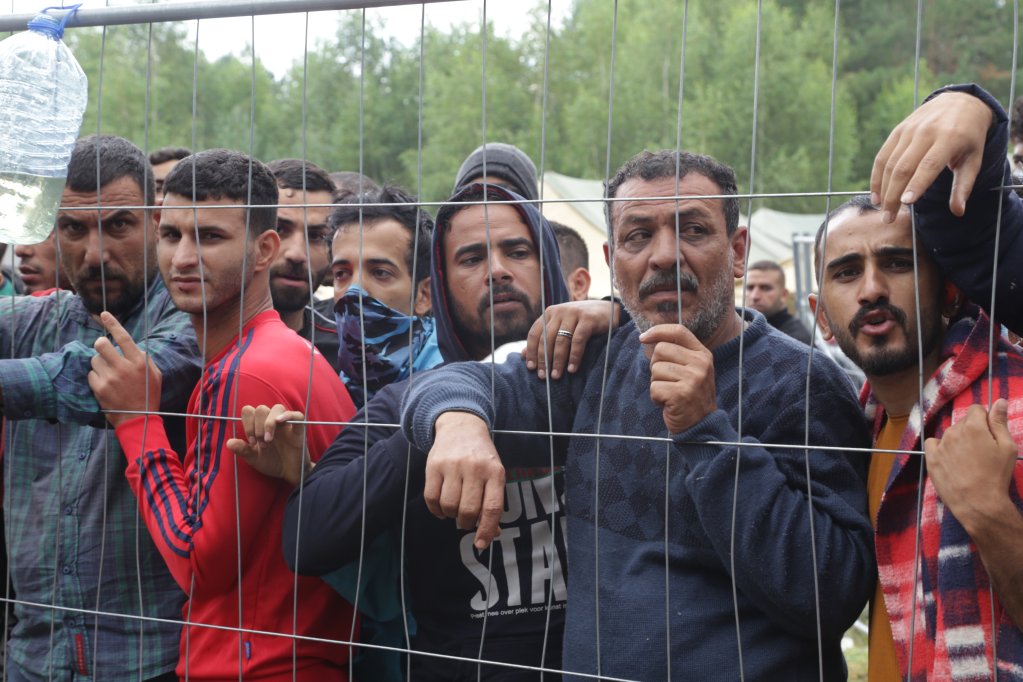
Meanwhile, after Poland, Lithuania and Latvia fortified their borders using emergency decrees, several migrants stuck in the region suffered death during the winter months linked to cold and hypothermia. According to figures from the EU Asylum Agency, just under 8,000 migrants managed to arrive inside the EU in total via Belarus that year, with over half of them entering through Poland. Rights groups have repeatedly criticized the increased use of pushbacks along these borders.
UK: Channel crossings pick up
The year also saw a significant rise in boat migrants reaching the UK from the coast of northern France. While this had been a lesser phenomenon in the preceding years, with the lifting of most COVID-19 restrictions by the middle of 2021, the numbers increased sharply. In all of 2021, a total of 28,526 people arrived in the UK after crossing the English Channel on small boats, compared to 8,466 in 2020, and 1,843 in 2019. Having just left the European Union in 2020, the island nation became more attractive for migrants, as it was no longer subject to the bloc's Dublin Regulation, which stipulated that asylum seekers should be sent back to the country where they first had applied for asylum.
With the Channel being the busiest shipping route in the world, small boat crossings did not come without dangers: In November 2021, a deadly shipwreck just off the French coastal town of Calais resulted in the deaths of at least 27 migrants, making it the largest single loss of life on the route to that point since records began. In total, over 60 people died while trying to reach Britain that year.
The rising arrival numbers put pressure on the government to act quickly. On the one hand, reception facilities for refugees and migrants were scarce and insufficient, leaving the UK government under Prime Minister Boris Johnson scrambling for solutions. Efforts to work with European partners were largely unsuccessful, as the island nation had just left the EU on the pledge to take back control over its own borders.
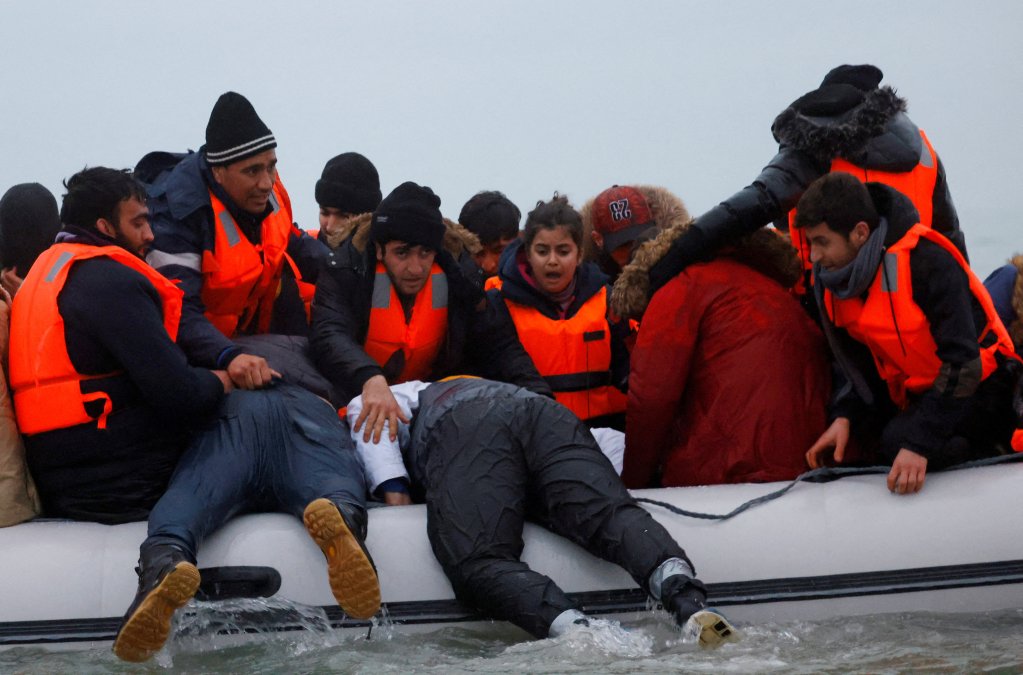
Afghanistan: Thousands flee the country following the Taliban takeover
Following the withdrawal of US and NATO forces in the summer of 2021 after 20 years in the country and the ensuing takeover of the country by the Islamist Taliban regime, Afghanistan underwent a significant exodus of people. Thousands of Afghans flocked to Kabul airport in August that year to try to escape the Taliban, even clinging onto planes. For those who remained behind, neighboring countries like Pakistan, Iran and Tajikistan became the primary destinations for many fleeing Afghans, though their longterm prospects in these countries have also repeatedly come into question, especially in Pakistan.
Most Afghans were fleeing the prospect of facing repercussions under the new regime, as the liberties and democratic principles they had experienced over the previous two decades were quickly eroded by the country's new rulers. The situation was becoming particularly untenable for women in the country, and the Taliban was increasingly clamping down on people trying to leave Afghanistan for any reason at all, even in cases with pre-arranged visas and permits for a new life abroad.
Western governments, including the United States and the EU, increasingly turned their attention to those left behind who had helped them during the 20-year occupation of the country. While thousands were evacuated that year alone, many more are still having to wait their turn to this day to reach safety far away from the Taliban and their henchmen. Germany alone pledged to take in over 30,000 such vulnerable Afghans in total.
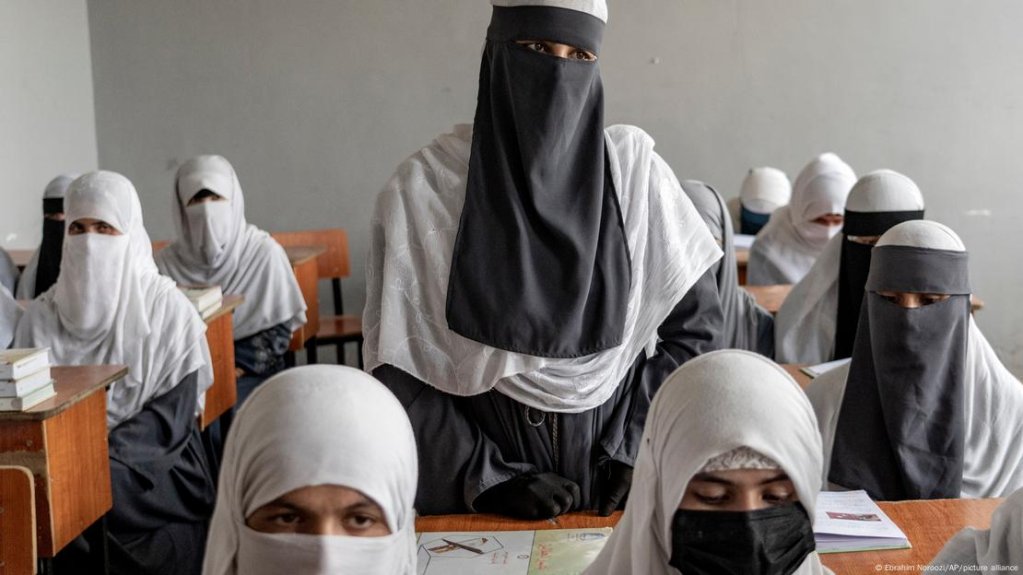
Read AlsoLooking back: the events that marked 2021 for migrants and refugees
2022: A year of major change
The Ukraine crisis: War returns to Europe
The invasion of Ukraine by Russian troops on February 24, 2022 changed the entire European landscape. According to the UNHCR, over 1 million people fled Ukraine in just the first seven days, the fastest exodus of refugees in Europe since World War II. Under the EU Temporary Protection Directive (TPD), Ukrainian refugees were granted immediate residence rights in the European Union without having to undergo the regular asylum process. This special form of temporary protection is currently set to run until 2027.
Within weeks, over two million Ukrainians found safety and shelter in the EU. Today, there are more than 5.1 million Ukrainian refugees recorded in Europe, and 4.3 million of those are under the protection directive, as the war continues to this day. Many of the refugees -- mainly women and children -- have found homes, especially in Poland and in Germany.
Rights groups, however, have repeatedly criticized the fact that, in their view, there's a double standard at play at the heart of the EU, with Ukrainians receiving preferential treatment compared to migrants and refugees from other regions.
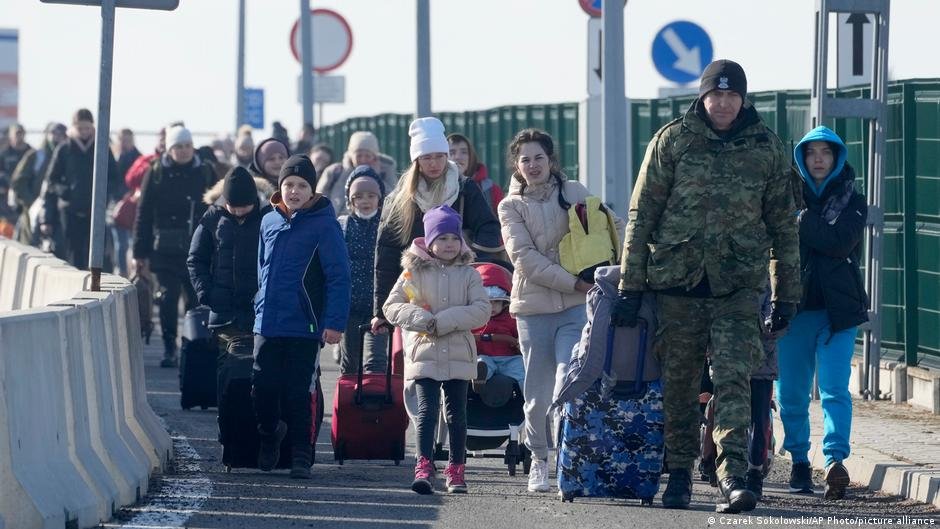
Opportunities in Germany — but only for certain migrants
Germany meanwhile introduced a new law to help integrate more foreigners in Germany into society -- especially the job market -- in cases where they did not have work permits.
The Opportunity Residence Act (Chancen-Aufenthaltsrecht) came into effect at the end of the year, aimed at helping those people who had been living in Germany for several years without secure residence status, often with a "tolerated stay" (Duldung). Under the new law, people with a Duldung would be given a probationary 18-month residence permit, giving them full legal status as well as access to the labor market. If they find employment and pass German proficiency tests, they would be regularized long-term.
The scheme was intended to help up to 137,000 individuals. In the end, about 84,100 people applied for the change, according to the Federal Office for Migration and Refugees. About 20 percent of all applicants have so far managed to switch over from the temporary to a permanent regular status, with the federal government hoping that this number will continue to grow.
UK: Rwanda plan challenged by courts
British Prime Minister Boris Johnson championed a new partnership with Rwanda, planning to offshore irregular migrants in the UK for processing -- and ultimately relocation -- in the central African nation. The reasoning behind the decision was that if people truly are only looking for a safe place to escape persecution and continue living their lives, Rwanda could be such a safe destination. Another stated goal of the highly divisive policy was to establish a firm deterrent against illegal entries into the UK; if prospective migrants learned that traveling halfway across the world to the UK would only land them in Rwanda, the business model of people smugglers would fall apart.
Several NGOs however slammed Rwanda's own human rights record amid growing reports of Rwandan President Paul Kagame running the nation in an authoritarian manner and creating an unsafe environment for refugees and migrants.
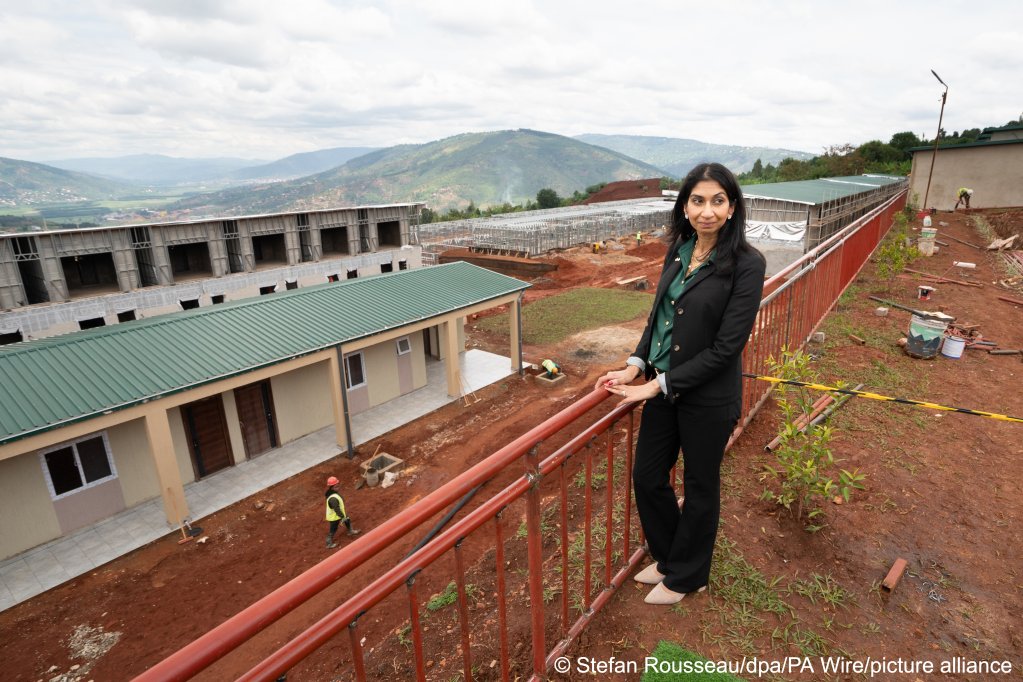
In the end, the contentious Rwanda deal had to be legally assessed repeatedly, including by the European Court of Human Rights (ECHR), as questions over sending people off to a third country with a questionable human rights track record remained. On more than one occasion, an airplane loaded with migrants to be sent to Rwanda was grounded at the last moment, with Rwandan authorities ready to take in the UK's rejected migrants.
Subsequent Conservative governments under Prime Ministers Liz Truss and Rishi Sunak kept trying to bring the plan to fruition; by the summer of 2024, the Rwanda deal was eventually abandoned with the election of Labour Party Prime Minister Keir Starmer. It is believed that the scheme cost the equivalent of almost 800 million euros of British taxpayers' money in the end -- without a single deportee from the UK ever setting foot in Rwanda.
Melilla: Border crossing attempt turns into a deadly stampede
2022 also firmly put the two Spanish exclaves of Ceuta and Melilla on the map. The previous year, in May, thousands of people had managed to reach Ceuta from the Moroccan mainland (mainly by swimming) in less than 48 hours amid heightened diplomatic tensions between Madrid and Rabat.
In 2022, at least 23 migrants of over 2,000 migrants died while trying to cross the border into Melilla. Many others remain unaccounted for to this day. Various probes following the incident found that Spain's border management tactics resulted in a stampede, with many of the victims dying from asphyxiation during the event. Amnesty International meanwhile claimed that authorities on both the Spanish and the Moroccan sides of the border tried to cover their tracks.
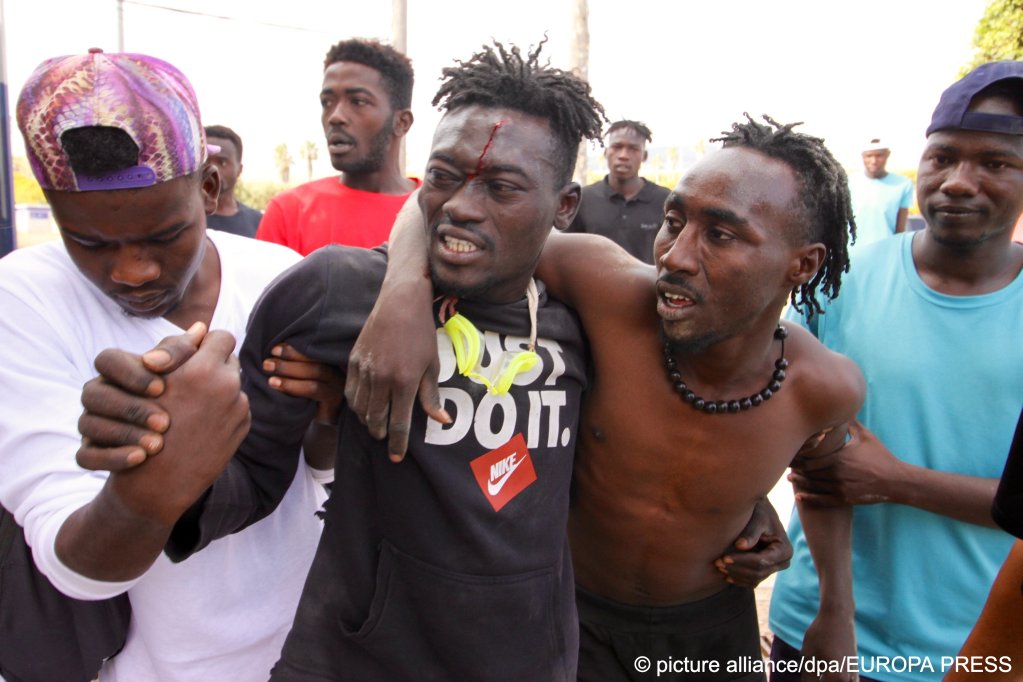
Read AlsoMigrants: The year 2022 in pictures
➡️To follow this series, please click on these links:
2015 - 2016: Fleeing conflict and Europe’s response (Part 1)
2017 - 2018: 'Fortress Europe' and new routes (Part 2)
2019 - 2020: More displacement and COVID-19 (Part 3)
2021 - 2022: New dynamics, wars and change (Part 4)
2023 - 2025: Tragedies, opportunities and migration management (Part 5)
Please note that this listicle is not exhaustive of all events that took place since 2015 relating to immigration to Europe. We try to address all individual developments involving migrants, refugees and asylum seekers as well as attitudes and policies related to migration, as part of our ongoing rolling coverage.
